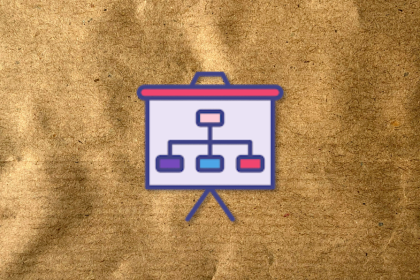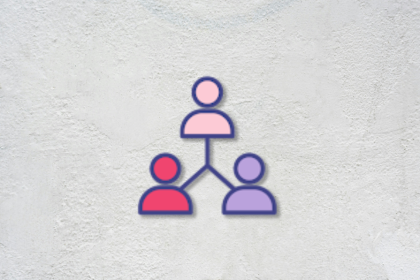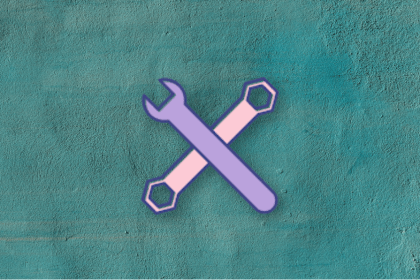When it comes to product work, we tend to like straight lines: process, roadmaps, sprints, the dopamine rush of crossing something off a list. But somewhere along the line, we confused structure for alignment.

It’s time to challenge the idea that PMs ideate, engineering executes, and the spec doc is gospel truth — because it rarely works that way. In the real world, the best outcomes often stem from integrated, messy, co-created partnerships grounded in shared ownership, open dialogue, and mutual trust.
In 2024, I found myself knee-deep in a complex infrastructure rollout. We were working across multiple payment platforms, trying to standardize onboarding workflows for different clients.
The aim? Minimize customization, maximize reuse.
I had everything mapped out: a clean backlog, polished PRDs, epics broken into digestible user stories. From my side of the desk, it felt airtight.
Then, three weeks into development, our lead engineer pinged me and asked, “Why are we building it this way?”
He wasn’t challenging the what — he was interrogating the how. And he was right to.
My approach was efficient, fast, tidy, and optimized for immediate delivery but it was fragile at scale. The engineers had spotted what I hadn’t: a modular redesign would be slower upfront, but far more resilient long-term. They weren’t just raising concerns. They were offering vision.
That was the first time I truly realized that the PM-to-engineer handoff isn’t just inefficient, it’s a complete fiction. We often act like development follows a neat sequence. It doesn’t. Innovation is messy. And that mess is where great products live.
To help you reassess your PM-engineering partnerships, this article outlines six key habits that helped me collaborate better across our entire team.

The best specs I’ve shipped weren’t my solo work. They were living Google Docs with late-night comments from backend engineers. If they help write it, they’ll care when it breaks.
Over the past few years as a software engineer, I remember receiving a dense document with dozens of tickets, each meticulously written. It was technically sound but emotionally vacant. No context, no “why.”
By contrast, on the projects where engineers helped shape the vision, the energy was palpable. We weren’t taking orders. We were building something we believed in.
When you invite engineers into the strategic conversation, the feedback you get changes. It’s no longer just feasibility checks. It becomes creativity.
One engineer suggested adding visuals for deforestation, so users could see environmental impact. Another saw potential for real-time climate alerts for prospective buyers. A junior dev even wondered if we could track energy ratings over time.
We built many of those ideas. But more importantly, they weren’t just shipped, they were championed.
Engineers tested them against edge cases. They explained them to non-technical stakeholders. It wasn’t “my roadmap, their code.” It became our product.
During a conversation at a product roundtable, Abhishek Dwivedi, an engineering leader, captured this perfectly: “Engineers aren’t just executors, they’re idea machines. He talked about how the best outcomes happen when engineers are brought into early-stage conversations, not just for feasibility checks, but to help define the product itself.”
When engineers understand the why, they don’t just execute. They elevate. They see the system holistically. They ask better questions. And sometimes, they become the source of innovation.
Reading a bug report is one thing. Hearing a user say “I couldn’t figure out where to click” is another. That emotional gap builds empathy. Engineers begin to design for humans, not just inputs.
We once built a loan eligibility tool for small business merchants. After we launched the MVP, conversion rates lagged. Then we brought two engineers onto a user interview. Midway through the call, one user said, “I just didn’t trust the numbers, it felt like a black box.” That moment clicked.
The engineers immediately saw how to add a transparency layer, showing how scores were calculated in plain language. Post-deployment, we saw a 27 percent increase in completed applications.
The engineers were listening, and what they heard, they internalized. That shaped the next three sprints.
Putting engineers on user calls changes the emotional distance. It closes the empathy gap. Suddenly, it’s not “fix this bug,” it’s “help Grace keep her business afloat.”
Randolph D’Souza, Director of Product Management at Vercara, emphasized that fostering a sense of ownership among engineers is crucial for building momentum. He suggested that when engineers see their contributions influencing product direction, it leads to deeper engagement, something that can’t be enforced top-down.
He also stresses that you must set expectations early and face operational realities directly, a mindset that has helped him manage both OEM and internal teams at Vercara.
Standups are transactional. Alignment is relational. I’ve seen breakthroughs happen when someone says, “we can’t do that,” and the reply is, “but the user needs it.” Tension isn’t bad, it’s where the magic lives.
I once led a project where we were developing a risk model for emergency responders. This wasn’t abstract, it was life or death. Miss a data layer, and people might not get the aid they need.
So I flipped the traditional model. Instead of handing down specs, I asked the engineering team to design key UI elements. They knew the bottlenecks and what would break under stress.
One engineer added a toggle to simulate scenarios across 6, 12, and 24 hours. That feature became the most-used aspect of the entire product. Why? Because our users, field workers, thought in time, not in coordinates.
You can’t spec your way into insights like that. You need engineers who co-own the outcome. And you get that when you stop seeing them as task owners and start seeing them as outcome partners.
When engineers feel invited into ownership, they don’t just build, they think. They ask hard questions, propose smarter defaults, and challenge assumptions with empathy.
Conflict isn’t a detour, it’s often a signal that you’ve reached a meaningful decision point. In high-stakes product work, tension is inevitable. The question isn’t how to eliminate it, but how to navigate it constructively.
In one cross-functional sprint, our priorities diverged. The product team was under pressure to ship quickly to meet quarterly KPIs. Engineering raised concerns about architectural fragility.
Rather than push forward with backchannel frustrations, we reframed the situation: both sides wrote down their top concerns.
It became immediately clear: this wasn’t a debate over features, it was a mismatch in risk appetite. The product team feared slipping on time-sensitive goals. Engineering feared systemic instability and costly rework.
That exercise changed everything. It gave us a shared lens to weigh trade-offs. We adjusted our strategy, launching a minimal, stable version in Sprint two, and scheduling foundational enhancements for Sprint four. The roadmap didn’t change, but the conversation did.
Returning to D’Souza, he warns against relying on assumptions in cross-functional settings. “Hope isn’t a strategy,” he says. In his experience, the real cost of poor alignment isn’t just delays, it’s eroded trust and unclear ownership.
When constraints are surfaced and addressed openly, people align around outcomes, not just roles. That level of clarity transforms conflict into collaboration.
In product development, there will always be friction: short-term speed versus long-term resilience, usability versus technical feasibility.
The most effective teams don’t flatten those tensions, they harness them. Because sometimes, the real breakthrough isn’t found in the backlog — it’s found in the conversation no one wanted to have.
Saying “Great work, team” is nice. But “Shoutout to the engineer who fixed the caching bug that saved us 40 percent load time” is unforgettable. Public praise builds culture. People remember who saw them.
In one case, a senior backend engineer debugged a gnarly payment reconciliation issue that had silently affected reporting accuracy for months. It didn’t show up in any standup. But I surfaced it in our all-hands: “We didn’t miss our OKRs because ‘Jack’ caught a bug no one else did. That matters.”
You could feel the shift in the room. Other engineers started surfacing edge cases earlier, taking more ownership, and proactively mentoring juniors on how to debug upstream. That moment of praise didn’t just recognize effort, it set a new cultural standard.
Celebrating publicly is modeling what you value. And when your values are clear, your culture becomes contagious.
Trying shifting from saying “Can you do this?” to “What would you do if this were yours?” This helps unlock vision. Engineers go from executors to architects.
Most engineers have a drawer full of ideas, scripts, hacks, and UX tweaks that never see daylight. That’s a shame. Because some of your most transformative features might already exist in that drawer.
I started asking a single question every Friday:
“If you owned the roadmap for the next sprint, what would you add or cut?”
From that prompt alone, we’ve:

Not every idea ships but every idea builds culture. Engineers feel seen and you create a norm where raising a hand isn’t a risk, it’s a contribution.
Alec Fullmer, Head of Product at Angel Studios, takes this idea seriously. His teams review app reviews and support tickets daily, not just to spot bugs, but to inspire new thinking. “We integrate our app reviews into Slack, so every morning, I come in and see all the new app reviews,” he says. That visibility ensures engineers are grounded in real user experience, not abstract requirements.
Fullmer adds that thanks to his background as a software engineer before transitioning into product management, “I’m more prone to mining my engineers for product ideas and insights.” When engineers understand the customer and the code, their ideas come pre-validated with feasibility and empathy.
Some of our biggest leaps came from this mindset. In one case, an engineer pointed out that a new feature duplicated existing functionality. We scrapped it, saved weeks of work, and reinforced a culture where engineers drive not just code, but product clarity.
The old model sees engineers as mechanics. The new model sees them as strategists.
This doesn’t mean every engineer should weigh in on every pixel. It means they can, and sometimes should. Especially your staff + ICs. These are system thinkers. Let them shape the system.
If you’re a PM, stop aiming for perfect specs. Start aiming for shared understanding. Give context. Invite critique. And admit when you’re unsure.
Engineers don’t need your certainty. They need your honesty.
If you’re an engineer, speak up. Good PMs don’t want compliance. They want clarity.
We’re not building factory lines. We’re building software that adapts, evolves, and reflects real human problems. That takes more than a ticket. It takes partnership.
Somewhere along the line, we confused collaboration with ceremony. We thought Jira tickets and rituals meant we were aligned.But true alignment isn’t loud. It’s quiet. Often messy. Built on trust, not templates.
The handoff model is comfortable. Predictable. But in today’s world, it’s a bottleneck. The future of product development doesn’t belong to the team with the cleanest backlog, it belongs to the teams who build together.
Once you’ve built something with your engineers, not just through them, you’ll never go back. There’s no handoff. Just shared purpose, shared stakes, and shared success.
Featured image source: IconScout

LogRocket identifies friction points in the user experience so you can make informed decisions about product and design changes that must happen to hit your goals.
With LogRocket, you can understand the scope of the issues affecting your product and prioritize the changes that need to be made. LogRocket simplifies workflows by allowing Engineering, Product, UX, and Design teams to work from the same data as you, eliminating any confusion about what needs to be done.
Get your teams on the same page — try LogRocket today.

Stop letting unreliable data block features. Treat data as inventory to track quality, ownership, and ship with confidence.

Learn why slide decks slow teams down and explore better tools like whiteboards, PRDs, and prototypes to improve collaboration and alignment.

AI PM roles are evolving fast. Learn the five types of AI PMs, the skills they need, and how they shape AI products across industries.

Learn how you can use AI agents to automate workflows, boost productivity, and choose the right tools while avoiding common pitfalls.